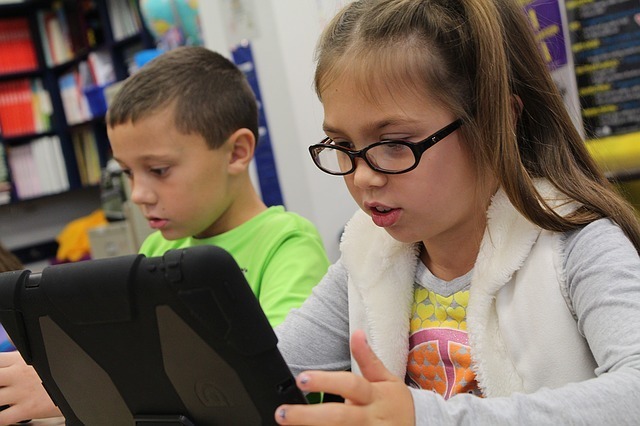 Image by April Bryant from Pixabay.
Image by April Bryant from Pixabay.
Parents are barraged with advice and warnings from pediatricians, child development experts, and well-meaning family members regarding screen time. There is constant worry about exposing children to too much media in favor of other more worthwhile endeavors.
Nonetheless, it is not uncommon to walk into a classroom and see a group of kids gathered around a single monitor, pointing and discussing strategy. You’re just as likely to see a child under headphones quietly swiping away at a tablet screen. When children are in the classroom interacting with a screen, some parents are left wondering if their child is playing or if quality learning is taking place.
The answer is, they are doing both.
Just like their board game physical counterparts, digital games can be effectively used to enhance understanding and practice skills, giving game-based learning a justified place in the modern classroom.
Game-based learning is the use of games, on a screen or in physical form, to engage a student in an activity designed with specific learning outcomes. Students are motivated to participate due to the fun and interactive nature of the activity and this heightened engagement leads to increased understanding of the planned learning objectives. The games a student plays in school are often called serious games. Although they are fun, they are designed with a specific learning objective in mind, rather than strictly for entertainment.
Teachers are always looking for ways to improve student engagement. Tapping into student interests as a means to teach new skills is a fundamental component of lesson design. Kids love digital games and as any parent knows, they have a seemingly endless reservoir of attention span to devote to their play. Why are they so engaging?
According to Dan White, CEO and co-founder of Filament Games, developers of the phenomenon Minecraft, it’s not for the reason you may think. Most people point to the visual side of gaming as having an almost hypnotic draw. Production values and graphics awe people into engagement. Anyone who as played Minecraft, though, knows there must be something else since the graphics in the prolific game are purposefully basic at best. If not visuals, then what?
White says that games are engaging for four key reasons:
White also notes that you rarely hear children say, “I’m bad at this game” in the way they would about a subject area like math or science. They say, “that game is hard” and yet, they want to try it again and again. Why not harness that interest and focus in the classroom?
Research on the subject of their use in the classroom generally concludes that serious games lead to increased motivation and engagement. This finding is well documented across years of research. Motivation and engagement are obviously great, but those values don’t necessarily translate into learning. But mistakes do.
Mistakes provide learning opportunities and within a game, feedback on missteps is immediate. Rather than waiting to receive paperwork back with miscalculations circled in red, the student can see mistakes right away and use that information to make forward progress. Performance data can be collected and used by the teacher to tailor learning objectives to the individual needs of the student. Assessment tools are often built into the architecture of the game, providing invaluable information to track student progress easily and accurately.
Games can’t and don’t replace teacher led instruction. Digital games have the greatest impact on learning when they are a supplement to instruction. In other words, teachers are the ones who actually teach skills but games can be used to deepen understanding, practice, motivate and synthesize learning while a learned skill is applied to a new situation. Teachers understand this, which is why so many of them integrate digital games into their classrooms.
A survey conducted by the Joan Ganz Cooney Center at Sesame Workshop gathered data on teacher attitudes towards using digital games in the classroom. The participants consisted of 505 teachers in K-8 classrooms across the country, the majority of which teach in public K-5 schools and have 5+ years experience in the classroom. What did these teachers report?
By carefully choosing products that target desired learning outcomes, teachers can very successfully integrate game-based learning into an overall classroom teaching practice.
As with all educational endeavors, communication and support between teachers and parents is paramount to success. Teachers can give parents the opportunity to further understand how their child is utilizing games to further understanding and comprehension by providing them information about the games being used and the skills being targeted. Parents then have the opportunity to support the teacher’s efforts and their child’s learning by supplying those games at home. As a bonus, next time your child begs for screen time, you can feel great saying yes.
We all know that modern classrooms must adopt and integrate technology to prepare students for the future. Digital game-based learning is an important component of that integration. As developers continue to design games that target, assess, and track student learning effectively, students stand to be the benefactors of heightened understanding and fun in the classroom.